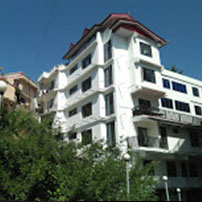Recommended Itinerary

-
Brajeshwari Devi Temple
The Brajeshwari Devi Temple is located in main Kangra city and has achieved a reputation for wealth, in gold, pearls and diamonds and tempted many invaders over centuries. Mahmud Ghazni sacked it in 1009, Mohammed Bin Tughlaq plundered it in 1337, Sikander Lodi destroyed the idols in the early 15th century and yet Khawas Khan sacked it yet again, in 1540.
In the intervening years the temple was rebuilt and refurbished several times, but in the great earthquake of 1905, both the temple and the fort were badly damaged. The present temple was built in 1920 and stands behind the crowded, colorful bazaar. The State Govt. maintains the temple and the deity sits under a silver dome with silver umbrellas.
-
Chamunda Devi Temple
Chamunda Devi Temple is located at a distance of 15 km from Dharamsala in Himachal Pradesh. Dedicated to goddesses Durga or Chamunda (Hindu deity), the surroundings of the temple provide an excellent venue for meditation prayers and spiritual attainments. It is an enchanting and charming spot with fascinating view of the mountains, rivers and forests. The location of temple was used as a cremation ground by the people of 22 villages and supposed to be a place of solace, spiritual attainments.
A large number of devotees travel to this place for worship and to attain spiritual peace for their ancestors. Taking dip in the Ban Ganga River is considered as more auspicious and sacred. People perform prayer to Lord Shiva with the water of Ban Ganga River.The 700 years old temple, Chanmunda Devi comprises of big complex with a ‘Kund’ (pond) in it. As per the rituals, the devotees coming to the temple take holy dip in the Kund. The main deity of the temple is kept under cover and is not accessible by the visitors, because of its sacred importance. There is a cave-like scoop located at the back of the temple, representing the stone lingam (embodiment of Shiva).
-
Jwalaji / Jwalamukhi Temple
Jwalaji temple is located at a distance of 34 km south of Kangra Valley. Dedicated to Goddesses Jwalamukhi with flaming mouth, the temple is believed to have nine permanent flames named after the goddesses- Mahakali, Unpurna, Chandi, Hinglaj, Bindhya Basni, Maha Lakshmi, Saraswati, Ambika and Anji Devi.
It is said that when, Sati, the consort of Lord Shiva, killed herself by jumping in the sacrificial fire when her father Daksha Prajapati insulted her husband, an enraged Shiva started roaming the entire universe with the body of Sati in his arms. His movement created havoc and imbalance in the Universe. To calm down the anger of Shiva, Lord Vishnu dismembered the dead body of Sati and various parts of the body fell at 51 different places in India which later on became sacred as Shakti Peeths. It is believed that Sati's tongue had fallen at the very place where Jwalaji Temple is now situated. The tongue of Sati is represented by Jwala (Holy Flame) that is perpetually burning.
The flames come out from nine different rocks in the temple. It is said that the Pandavas have visited this sacred place. Even Emperor Akbar paid yearly visit to this Temple after he became impressed with the holy flames that kept burning even after he had put a massive chhatra (canopy) over it to extinguish the flame. The climat of this region is quite moderate with cool but pleasant winters and warm summers.
-
Chintpurni Temple
The temple dedicated to Mata Chintpurni Devi is located in District Una of Himachal Pradesh. Mata Chintpurni Devi is also known as Mata Shri Chhinnamastika Devi.Devotees has been visiting this Shaktipeeth for centuries to pray at the lotus feet of Mata Shri Chhinnamastika Devi.They bring with them their worldly concerns and seek blessings from the Devi.It is believed that if you ask something from the Devi with a true heart, your wish will be granted.
In the center of the Temple is the temple garbha griha. The image of Mata Chintpurni Devi is installed here in the form of a pindi (a round stone). People queue up for a darshan of the Devi and make their prayers and offerings. Its a kind of a custom at the Temple that the devotees, after the holy Darshan of the Goddess, get their photos clicked by the professional photographers in the Temple complex. The view of the Chintpurni town and the far flung scenic contours is enjoyable from the back-yard of the temple.






